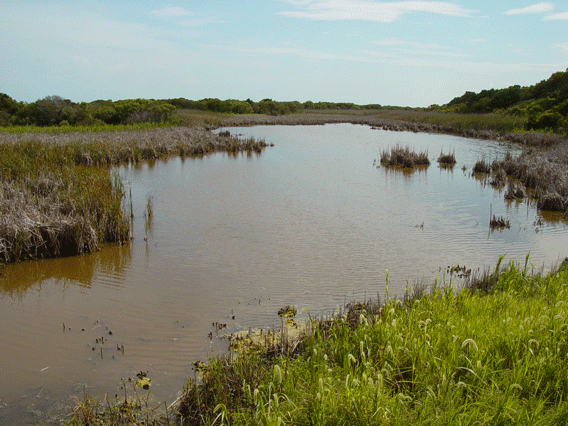The water in Sandpiper Pond is now relatively salty as a result of two changes. An inlet to the ocean was constructed in 2005. And, a larger culvert was installed to connect Sandpiper to Huntington Marsh.
Cattails appear to be most sensitive to increased salinity. In 2006 cattails showed signs of salt stress and by 2007 cattails were dead. This response was most dramatic near the inlet.
As patches of Phragmites declined due to salt stress, saltmarsh foxtail-grass (Setaria magna) expanded in importance. In 2007 this species was dominant in some areas.
Relative to cattail, Phragmites is more tolerant of salinity. Stands of Phragmites adjacent the shoreline are persisting but are stressed. Perhaps through time these also will die off.
Scattered along shoreline of Sandpiper are clumps of black needle rush (Juncus roemerianus). These are relics from the salt marsh that once existed at this site.
In fall, 2007 we observed scattered clumps of saltmarsh cordgrass (Spartina alterniflora) for the first time. These are more common near the inlet at the edge of the open water and we think they arose from root stocks carried into Sandpiper on a rising tide.
 |
|
Interpreted landscape scene.

|
|
|
|
|
 
|
|
Marsh restoration at Sandpiper Pond, Huntington Beach State Park. This site was once a salt marsh but closing of an inlet to the ocean allowed invasion by cattails and Phragmites australis (common reed). Activities include long-term monitoring of community change following re-opening of an inlet and enlargement of a culvert. Pass your mouse over the upper left hand corner of the photograph to see the excavated inlet.

|
|
|
|
|
|
|
|
|
|
|
|
|
|
|
|
|
|
|
|
|
|
|
|
|
|

